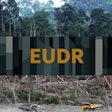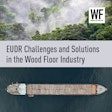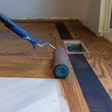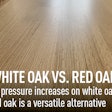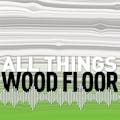This week, we’ll do a quick look at the use of “NA” in our industry. The two most familiar terms are probably NAUF and NAF. NAUF is No Added Urea Formaldehyde and NAF is No Added Formaldehyde. Clearly the “NA” is “No Added.” You can have other No Added features (no added sodium is a familiar food claim), but for us, we’re mostly looking at formaldehyde.
Remember that there is naturally occurring formaldehyde in just about everything. We need to make the distinction between what was already there and what we’ve added in. There is no “formaldehyde-free floor,” but you can have one where you have not added any more to the product.
There are typically three types of formaldehyde glue combinations used by the wood industry: urea formaldehyde, phenol formaldehyde and melamine formaldehyde. (Melamine formaldehyde also comes in a version of melamine urea formaldehyde, referred to as MUF, which is very commonly the glue used in our MDF flooring cores.) As a general rule of thumb, the bonds in the urea formaldehyde combination are weaker, so over time the emission levels of free formaldehyde are a bit higher. In the original development of air quality standards, people looked at formaldehyde glues as undesirable and urea formaldehyde glue as an absolute “no-no.” That’s why there is a special notation for NAUF but we don’t bother to make note of NAPF or NAMF.
And since we’re talking formaldehyde acronyms, I’ll toss in one more for free this week: ULEF. That’s Ultra Low Emitting Formaldehyde (it tops out at 0.04 ppm under CARB, where a regular CARB certification for plywood is 0.05 ppm.) ULEF can be any type of formaldehyde glue (and it is often PF or MUF), but rather than looking at what went in, the testing is checking what went out, i.e. that the emissions were extra low.



















